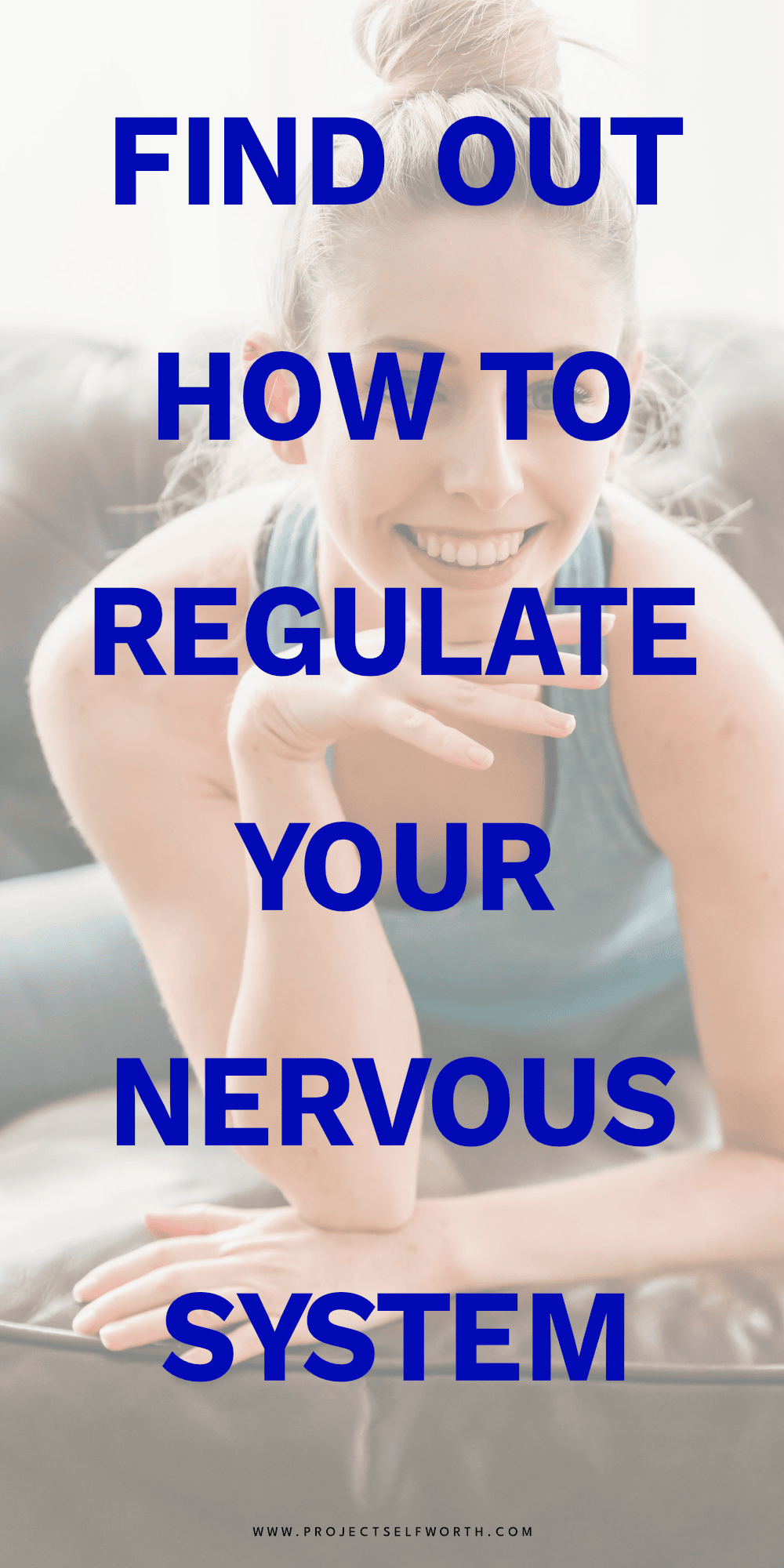Feeling Stressed? How to Regulate Your Nervous System
Now that you understand more about polyvagal theory, the next step is to learn how to regulate your nervous system.
Life throws curveballs, and sometimes it feels like our bodies get stuck in “fight or flight” mode. This is our nervous system responding to stress, but when it’s constantly activated, it can leave us feeling overwhelmed, anxious, and drained.
Understanding your nervous systems and the four trauma responses is an essential part of understanding you. Many people live their lives in a state of dysregulation: either amped up into fight or flight (anxiety) or shifted down into freeze (depression).
But even if you don’t struggle with chronic anxiety or depression, learning how to regulate your nervous system is key to your overall mental well-being. Basically, emotions are meant to be temporary. We’re meant to go through a phase of activation and then back down into regulation. It’s the getting back to regulation part that most of us struggle with.
What Is The Autonomic Nervous System?
For our purposes today, it’s helpful to understand more about what the autonomic nervous system is.
This system is a component of the peripheral nervous system that regulates involuntary physiological processes like heart rate, blood pressure, respiration, digestion, and sexual arousal. It contains three distinct divisions: sympathetic, parasympathetic, and enteric.
Understanding the autonomic nervous system is essential for regulating it effectively. By learning how the nervous system works, individuals can better understand how their thoughts, emotions, and behaviors are connected to their physical sensations. This knowledge can help individuals develop strategies for managing stress, anxiety, and other issues related to stress and nervous system dysregulation.
10 Ways To Regulate Your Nervous System
The good news is, we have the power to regulate our nervous system and shift towards a state of calm and clarity. Here are some techniques you can start using today:
1. Stimulate Your Vagus Nerve
Your vagus nerve is controls your nervous system states. Stimulating (or toning) your vagus nerve can not only help you feel better in the moment, but over time it will help you get over feeling dysregulated much faster.
Here’s our guide on how to stimulate your vagus nerve.
2. Do A Body Scan
A great option is to become more aware of your body’s signals by doing a simple body scan. Mentally scan around your body. What do you notice? What sensations come up? Are you clenching your jaw? Is your breath shallow?
Simply taking a moment to check in with yourself throughout the day allows you to identify when your nervous system is ramping up. Then you can use one of the other techniques to start winding down if necessary!
3. Deep Breathing
Breathwork is a classic emotional and physical fix-all for a reason! Slow, deep breaths activate the parasympathetic nervous system, which is responsible for relaxation. Try box breathing: inhale for 4 seconds, hold for 4 seconds, exhale for 4 seconds, and hold for 4 seconds. Repeat for a few minutes.
4. Mindfulness Meditation
Meditation helps train your attention and cultivate a sense of calm. There are many free guided meditations available online, or you can simply focus on your breath and observe your thoughts without judgment.
5. Move Your Body
Exercise is another fantastic way to release tension and boost your mood. Find an activity you enjoy, whether it’s a brisk walk, yoga, or dancing in your living room.
6. Progressive Muscle Relaxation
One annoying thing about trying to calm down is thinking that you are relaxed, when you’re not. One way around this is through progressive muscle relaxation. Basically, just go through all your body parts, by purposefully tensing them up and then relaxing them, one by one. Many times it’s better a better strategy to tense up and release part by part, rather than just telling our whole body to relax at the same time.
7. Weighted Blankets
I’m not kidding when I say my weighted blanket changed my life! I used to toss and turn all night; now I do a relatively good job at sleeping only on my back.
But they’re not just good for improved sleep. The way they work is by applying gentle pressure. This stimulates a hug (or a feeling of physical safety), which in turn lets your nervous system truly relax.
9. Social Connection
One of the foundations of nervous system regulation is co-regulation. This is what babies get from watching their mothers, but it’s also something we can get simply by being around other people. You can think about your body working through Monkey See, Monkey Do. When you see someone around you who is relaxed, it signals your autonomic nervous system to also get into a relaxed state.
10. Sensory Experiences
Sensory experiences include all those hallmarks of self-care: taking a long bath, listening to relaxing music, spending time in nature, or even just enjoying a cup of tea. Let your body feel what you’re doing. If you’re outside, look around and not at your phone. Getting into the moment and into your body is the whole point.
So what did you think? Do you have a better understanding of how to regulate your nervous system? Which tool will you try out first?
Final Thoughts On Regulating Your Nervous System
By incorporating these techniques into your daily routine, you can learn to regulate your nervous system and find a greater sense of calm and well-being. Remember, a regulated nervous system is essential for not only managing stress but also for optimal physical and mental health.

Love This Post? Then Save It To Pinterest!




